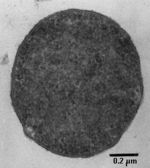 Microbes require iron (Fe) as an essential element for growth and development. It has two environmentally stable oxidation states (II and III) readily participating in redox reactions covering a wide magnitude of biological electron transport and redox reactions including respiration, oxygen activation and binding, degradation of peroxides and superoxides, synthesis of DNA, proteins, and other organic molecules, and energy fixation pathways. At the same time, unregulated iron uptake can lead to toxicity, reactive oxygen species (ROS) and to inhibition of growth.
Microbes require iron (Fe) as an essential element for growth and development. It has two environmentally stable oxidation states (II and III) readily participating in redox reactions covering a wide magnitude of biological electron transport and redox reactions including respiration, oxygen activation and binding, degradation of peroxides and superoxides, synthesis of DNA, proteins, and other organic molecules, and energy fixation pathways. At the same time, unregulated iron uptake can lead to toxicity, reactive oxygen species (ROS) and to inhibition of growth.
Microbes have evolved an iron storage mechanism used to store iron under limiting or environmental stress. The most studied system is that in Escherichia coli which produces three structurally and chemically related storage proteins; ferritins, bacterioferritins, and Dps (DNA-binding proteins during stationary phase). Ferritin and bacterioferritin are a tetracosameric structures capable of storing 2,500 and 1,800 iron atoms respectively. Bacterioferritin differs from ferritins in that they have an iron protoporphyrin IX (heme) at the interphase of each subunit. Dps is a dodecameric ferritin, which is induced under stationary phase of growth or by oxidative stress. These supramolecular structures help sequester iron in the cytoplasm and prevent toxicity of free iron in the cytoplasm.
Microbes living in low pH environments are subject to high concentrations of metals, in particular iron. How these microbes respond to metal stress is key to understanding how organisms control energy producing metabolic reactions in the cell. Recently, the genome of T. acidophilum was completed affording us a glimpse of the possible biochemical pathways responsible for the survival of this organism in an acidic environment, but analysis of the T. acidophilum genome did not reveal any molecular pathways for the production of known iron storage proteins ferritin, bacterioferritin, or Dps.
How does T. acidophilum manage the high concentrations of soluble iron, or other metals, liberated by its acidic environment? Does this organism have a novel iron storage mechanism? What are the cellular responses to stress to T. acidophilum cause by high metal concentration in the cytoplasm or by ROS? This is one of the questions that I am trying to answer using transcriptomics to look at differential gene expression of this Archeaon under varying iron and other environmental stress conditions.









